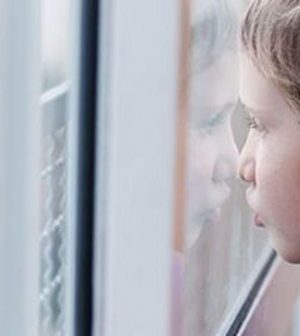- Navigating Your Midlife Crisis: Embracing New Possibilities
- City Raccoons Showing Signs of Domestication
- Mapping the Exposome: Science Broadens Focus to Environmental Disease Triggers
- One Week Less on Social Media Linked to Better Mental Health
- Your Brain Changes in Stages as You Age, Study Finds
- Some Suicide Victims Show No Typical Warning Signs, Study Finds
- ByHeart Formula Faces Lawsuits After Babies Sickened With Botulism
- Switch to Vegan Diet Could Cut Your Greenhouse Gas Emissions in Half
- Regular Bedtime Does Wonders for Blood Pressure
- Dining Alone Could Mean Worse Nutrition for Seniors
Signs of Autism Differ in Brains of Boys, Girls

Researchers have discovered differences between the brains of girls and boys with autism that they say may improve diagnosis of the developmental disorder in girls.
“We detected significant differences between the brains of boys and girls with autism, and obtained individualized predictions of clinical symptoms in girls,” said study senior author Vinod Menon, a professor of psychiatry and behavioral science at Stanford University.
“We know that camouflaging of symptoms is a major challenge in the diagnosis of autism in girls, resulting in diagnostic and treatment delays,” Menon said in a university news release.
In the study, he and his university colleagues used artificial intelligence to analyze MRI brain scans from 637 boys and 136 girls with autism worldwide.
Girls had different patterns of connectivity from the boys in several brain centers, including motor, language and visuospatial attention systems. The largest differences between the sexes were in a group of motor areas.
Among girls, the differences in motor centers were linked to the severity of their motor symptoms. Girls whose brain patterns were most similar to boys tended to have the most significant motor symptoms of autism.
The researchers also identified language areas that differed between boys and girls, and noted that previous studies have found greater language impairments in boys with autism than in girls with autism.
The brain differences between girls and boys with autism were not seen in youngsters without the condition.
The study was published online Feb. 15 in the British Journal of Psychiatry.
Autism is diagnosed in four times as many boys as girls, and most autism research has focused on males, the researchers noted.
“When a condition is described in a biased way, the diagnostic methods are biased,” study lead author Kaustubh Supekar, clinical assistant professor of psychiatry and behavioral sciences, said in the release. “This study suggests we need to think differently.”
Girls with autism generally have fewer repetitive behaviors than boys, which may contribute to delays in diagnosing the condition, according to the researchers.
“Knowing that males and females don’t present the same way, both behaviorally and neurologically, is very compelling,” said Dr. Lawrence Fung, an assistant professor of psychiatry and behavioral sciences who treats patients with autism at Stanford. He was not part of the study.
“If the treatments can be done at the right time, it makes a big, big difference,” said Fung. “The consequences are really serious if they are not getting diagnoses early.”
More information
For more on autism, go to the Autism Society.
SOURCE: Stanford University School of Medicine, news release, Feb. 17, 2022
Source: HealthDay
Copyright © 2025 HealthDay. All rights reserved.










